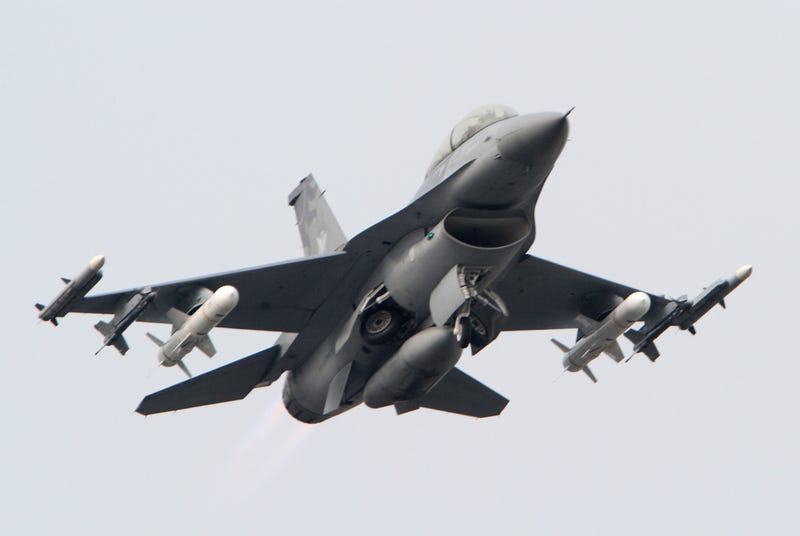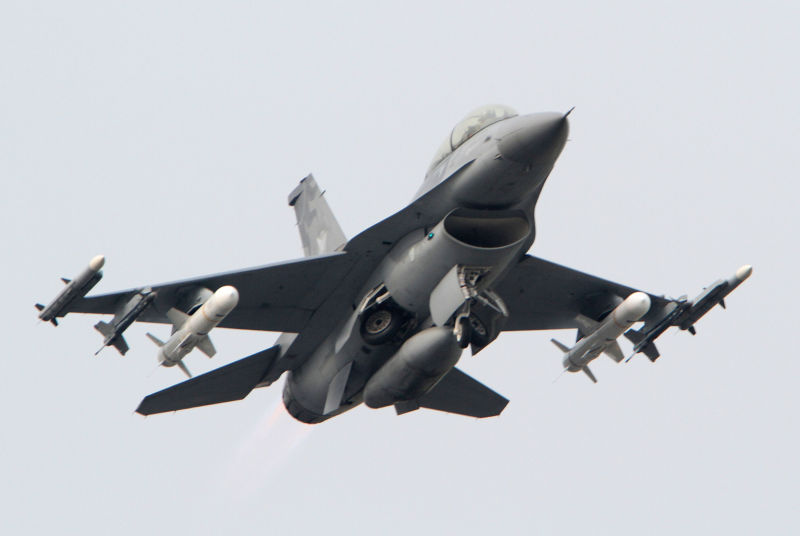
 Foxtrot AlphaTech and news from the world of modern defense.
Foxtrot AlphaTech and news from the world of modern defense.This week, the United States announced its intention to sell Taiwan a fleet of new F-16 fighter jets. The sale involves nearly 70 F-16 fighter jets worth $8 billion and is intended to help the island democracy defend its airspace against attack from the communist-dominated mainland. The People’s Republic of China’s growing economic, political, and military influence has left the United States the only country willing to sell arms to Taiwan, and even then the U.S. won’t give it everything it wants.
In 1949, at the end of the Chinese Civil War, China was essentially split into two political entities: the victorious Chinese Communist Party on the mainland and the beaten Chinese Nationalists, who retreated to the island of Formosa/Taiwan to lick their wounds. The two sides are separated by the Taiwan Strait, which is just 112 miles wide.
For decades China’s poverty and inability to field a credible navy meant that strait protected Taiwan from invasion. The island’s economy prospered, turning it into a major regional economic power while the mainland remained mired in relative poverty.
Since the 1980s, China has enjoyed consistent double-digit economic growth. Thanks to trade with the West and neighbors Japan, Korea, and yes even Taiwan, China has lifted hundreds of millions out of poverty. It’s probably the biggest economic miracle in the last hundred years. A byproduct of that is China’s growing global economic and political clout, and military that has grown dramatically over the past quarter century. The balance of military power between China and Taiwan has swung decisively, and irreversibly, in the mainland’s favor.
Advertisement

As late as the 1990s, the rest of the world was willing to sell Taiwan arms. Taiwan has German minesweepers and bridging equipment, Dutch Zwaardvis-class submarines, and French Lafayette frigates and Mirage 2000-5 jet fighters. Today, Beijing’s power is formidable enough it can threaten to put an economic hurt on any country that sells Taiwan arms. This economic isolation has worked: Taiwan has money to spend but nobody wants to cross China.
Advertisement
That is, except for the United States of America. The latest deal, approved by President Donald Trump, is for 66 F-16C/D Block 70 fighters (also known as the F-16V) for a total of $8 billion. Included in the deal are 75 sets of engines, secure digital communications, radars, GPS navigation sets, electronic countermeasures systems, mission computers, and M61 20-millimeter Gatling guns. In other words, one per aircraft plus nine spares and a smattering of ground support equipment.

Advertisement
The F-16 Block 70 is the latest version of the F-16 Fighting Falcon, a fighter jet that’s been in continuous production since the late 1970s. Nearly 30 countries fly the F-16, with more than 4,600 planes built to date. The big upgrade for the Block 70 series of jets is the APG-83 active electronically scanned array radar system, which includes F-22 and F-35 radar technology and has the ability to track up to 20 aerial targets at once. Block 70 also includes a revamped cockpit, fuel tanks built into the upper fuselage to give the jet a greater fighting range, advanced versions of the General Electric F110 afterburning engines, and the Joint Helmet Mounted Cueing System II, which projects data into the pilot’s helmet visor and allows the pilot to aim his or her weapons by merely pointing looking at them.
The F-16V is a proven fighter and, thanks to being produced by the same company that makes the F-35 Lighting II and the F-22 Raptor, incorporates some of the same tech to keep it relevant. Yet one can’t help but notice that just as the United States warns Chinese fighter aircraft are becoming more advanced, one jet is sitting this sale out: the F-35.
Advertisement
The F-16 Block 70 may be a fourth-generation fighter with fifth-generation technology baked in, but it’s still not a fifth-generation fighter. According to the Department of Defense China is currently developing two fifth generation fighters, the J-20 and FC-31, both of which include built-in stealth technology—something the 1970s-era F-16 does not. In addition to being stealthy the J-20 is also expected to be highly maneuverable and equipped with the PL-15, an air-to-air missile with its own nose-mounted radar and an estimated range of 124 miles.

Advertisement
The J-20 fighter will be in the vanguard in any military action against China, and in a head to head matchup between the F-16 and J-20 both jets have their advantages and disadvantages. The F-16 has proven American technology that, although extremely expensive, will work. This particularly applies to the radar and weapon systems. On the other hand the F-16 is not stealthy, and will be vulnerable to the PL-15. The J-20 looks great on paper, with stealth, new, long-range missiles, and a good radar. On the other hand, nobody outside of China knows how good—or bad—China’s first fifth generation jet fighter really is.
By all rights, Taiwan should be buying F-35s instead of F-16s. Yet China is the second most powerful economy on Earth and even Washington must consider when and how to cross it. Already, China has threatened to sanction U.S. companies involved in the deal as punishment—an empty gesture as most of the goods produced by U.S. defense contractors are barred from export to China anyway.
Advertisement
The F-16 deal is an example of the complicated relationship between Washington and Beijing. The two countries must learn to live with one another, and for now, that means F-16s instead of F-35s. While the U.S. looks like it’s holding back, and perhaps even appeasing China, Washington could still sell the F-35 if the relationship with Beijing were to sour—and then Taiwan would have twice as many modern jets as it has now. For now, the F-16 deal is probably the best deal the three sides can hope for.













